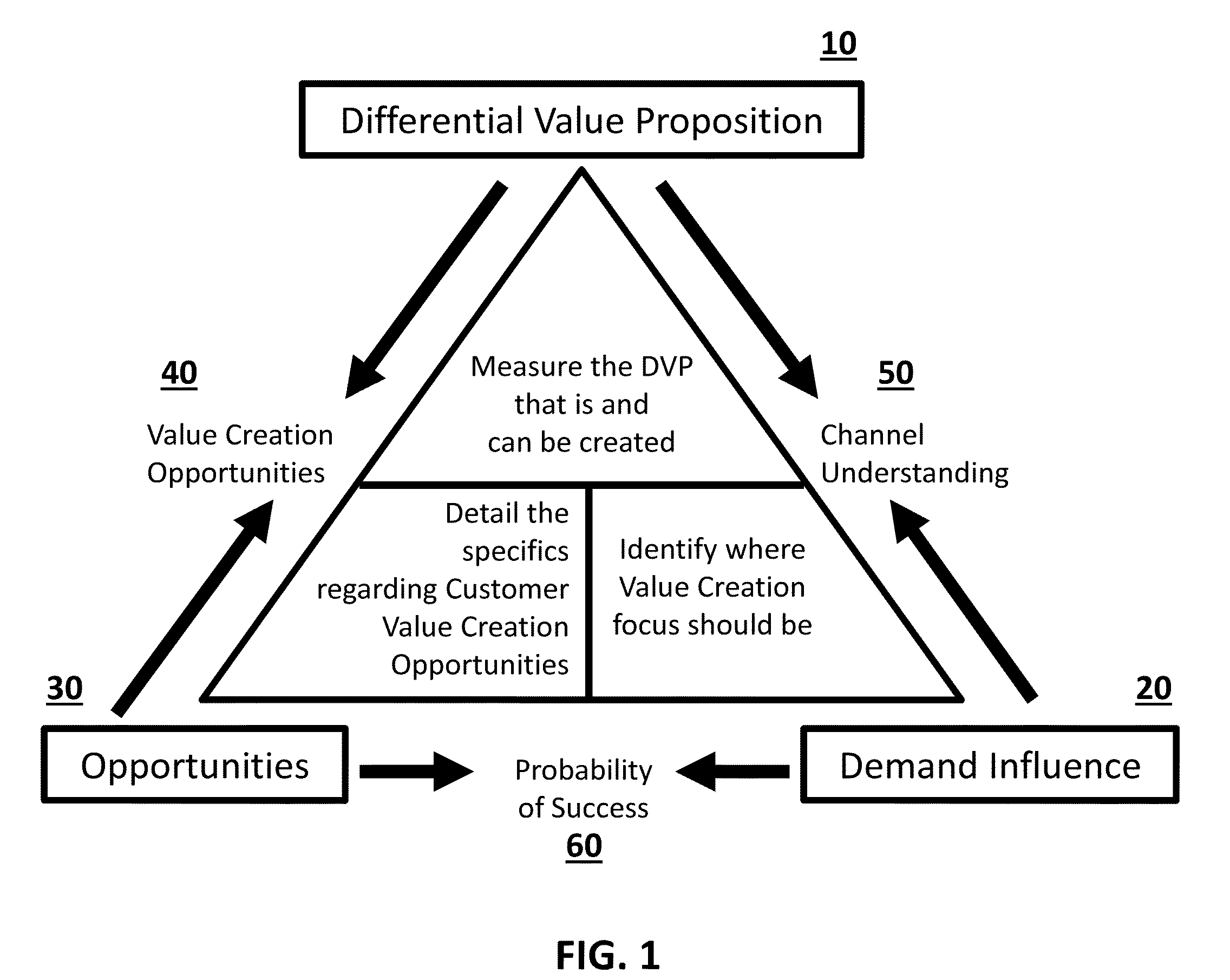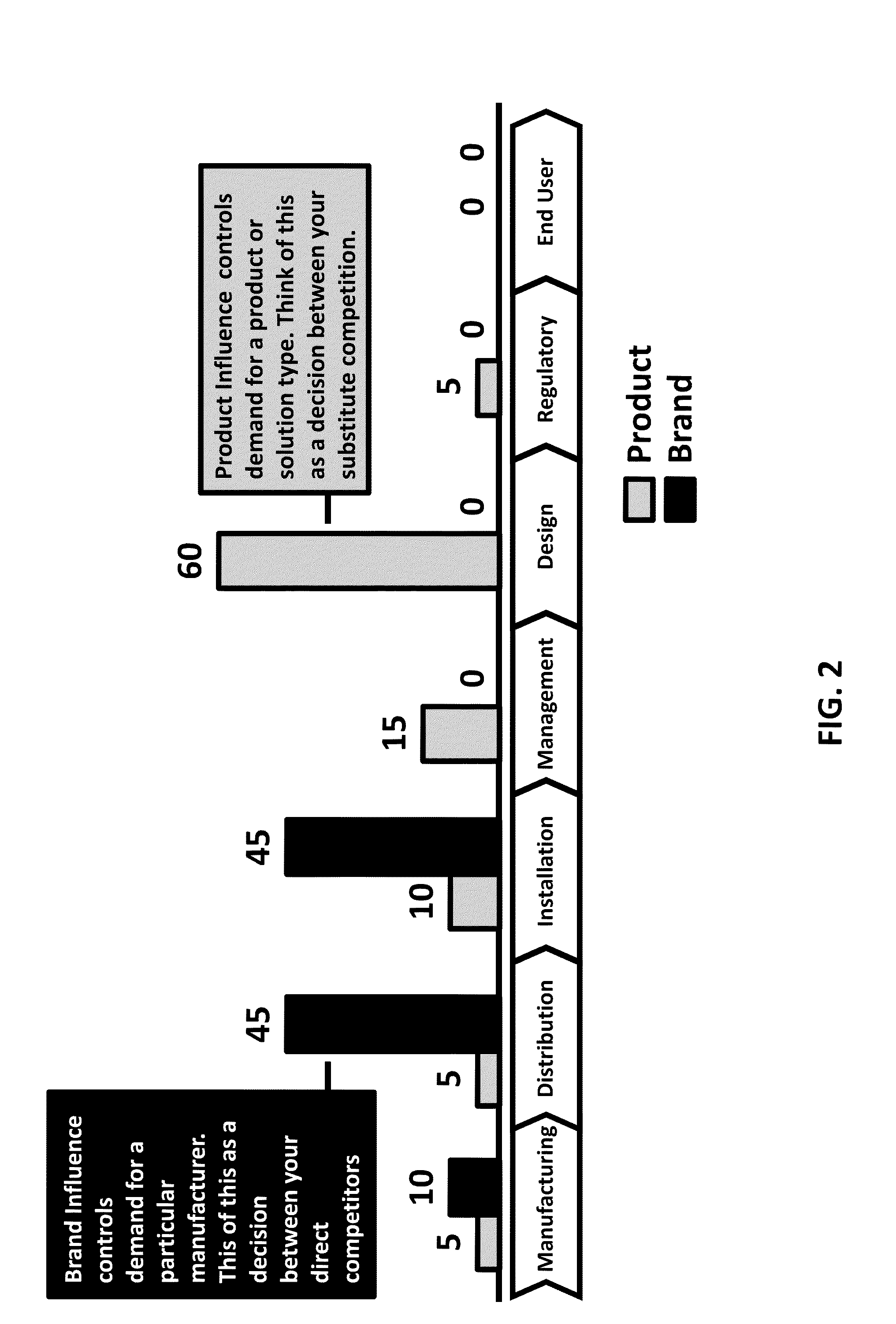System and method for customer value creation
a customer value and value technology, applied in the field of system and method for data collection, analysis and management, can solve the problems of difficult data integration of silos of data, the complexity of the customer experience, and the cost of doing business as a type of knowledge, so as to increase the profitability of the customer organization
- Summary
- Abstract
- Description
- Claims
- Application Information
AI Technical Summary
Benefits of technology
Problems solved by technology
Method used
Image
Examples
Embodiment Construction
[0094]The system and method of the present invention is a methodology and tool set that allows organizations to collect, manage, analyze, and act on data that quantifies their competitive advantage from their customer's perspective. This is done by enabling organizations to systemically answer the question, “Do My Customers make more money doing business with me?”
[0095]In one exemplary embodiment, the system of the present invention may be used by a consulting business helping a client (i.e., the organization) collect, manage, analyze and act on data (i.e., manage “customer value creation” or “CVC”) from the client's customers. The system may be used by organizations without depending on consultants to manage customer value creation. In one embodiment, at the core of managing customer value creation is an integrated dataset and schema, termed “Customer Value Creation Data.” Embodiments of the present invention go beyond “Voice of Customer” work in that customer value creation includ...
PUM
 Login to View More
Login to View More Abstract
Description
Claims
Application Information
 Login to View More
Login to View More - R&D
- Intellectual Property
- Life Sciences
- Materials
- Tech Scout
- Unparalleled Data Quality
- Higher Quality Content
- 60% Fewer Hallucinations
Browse by: Latest US Patents, China's latest patents, Technical Efficacy Thesaurus, Application Domain, Technology Topic, Popular Technical Reports.
© 2025 PatSnap. All rights reserved.Legal|Privacy policy|Modern Slavery Act Transparency Statement|Sitemap|About US| Contact US: help@patsnap.com



